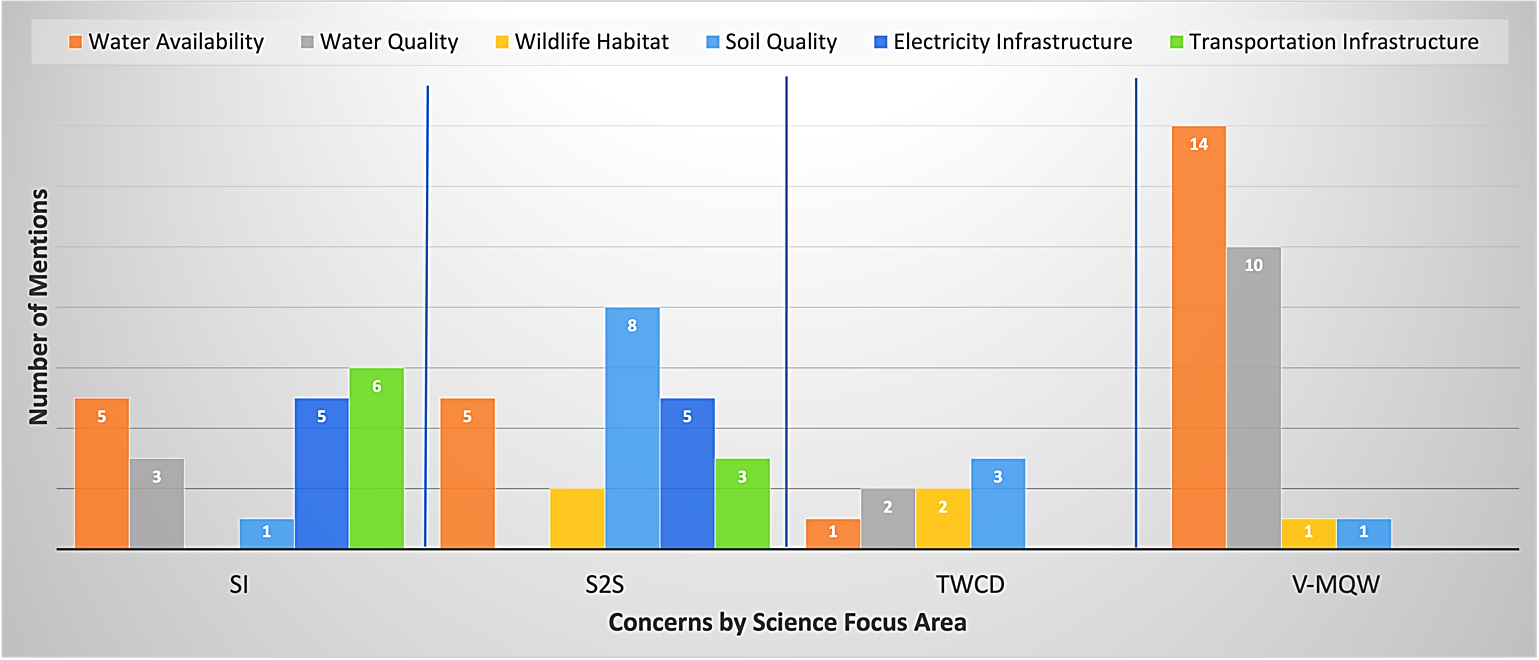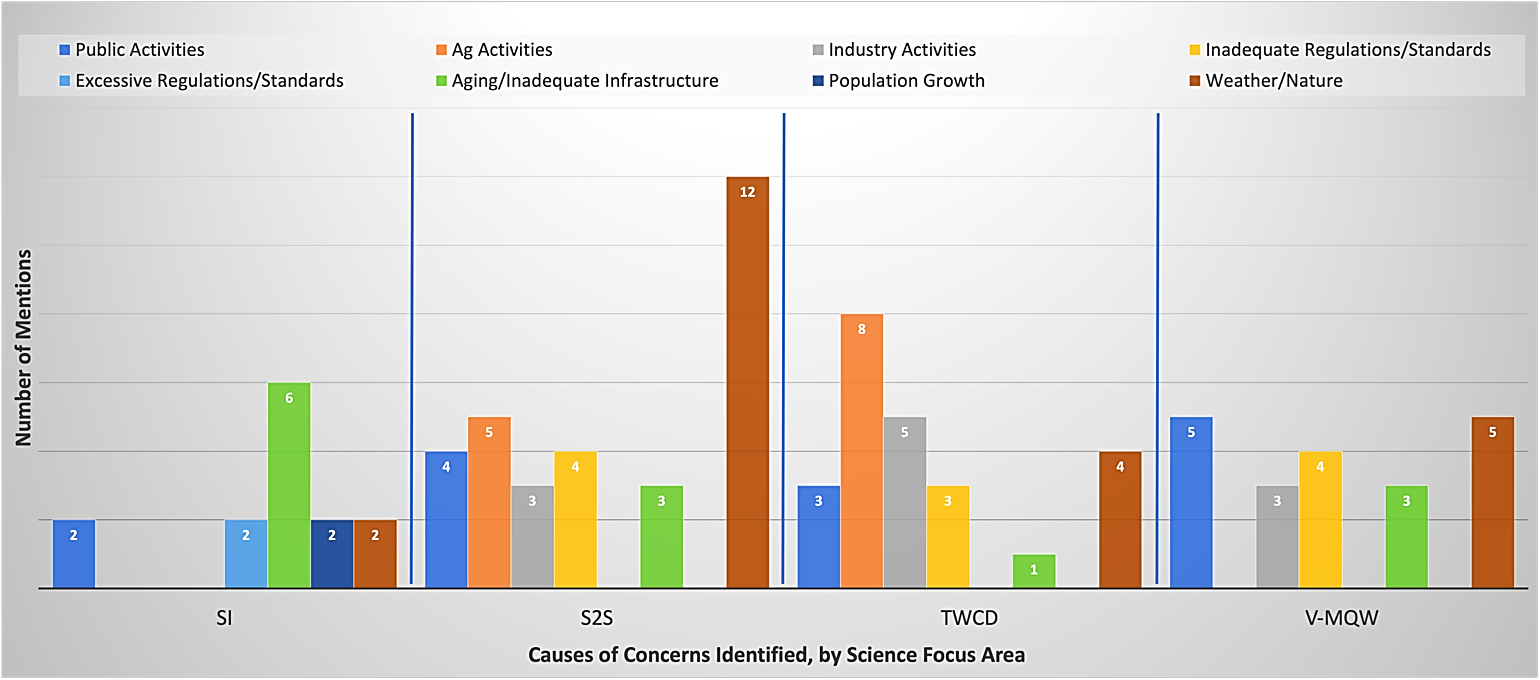
OK NSF EPSCoR Social Dynamics Team Conducts Policy Landscape Mapping
EPSCoR Update - Oct. 2021
Dr. Kristin Olofsson, Assistant Professor of Political Science at Oklahoma State University (OSU) collaborated with Drs. Kuhika Gupta, Joe Ripberger, Hank Jenkins-Smith, and Carol Silva from University of Oklahoma (OU) as well as Pavithra Selvakumar, Aubrey Andrews and Makenzie Newton (OSU graduate students) to map policy landscapes of each of the four Focus Areas (Changing Subseasonal to Seasonal Weather Pattens (S2S); Terrestrial Water and Carbon Dynamics (TWCD); Variable and Marginal Quality Water Supplies (V-MQW); Sustainable Water and Energy Infrastructure (SI) of the S3OK project. In policy landscape mapping, the team identifies who is involved in the issue, who is affected by the issue, related goals within the focus area, and the narratives told by those individuals about the issue.
“Our work recognizes the inherent complexity of the policy issues and capitalizes on that complexity by adopting a systems approach. We use content analysis of a variety of sources, such as write-in survey answers, newspapers, Twitter, public meeting minutes, focus groups, and many more,” Olofsson said.
By combing through various sources with various associated biases, the research team aims to develop a more complete picture of who is active in, for example, the issue area of terrestrial water and carbon dynamics. The team also intentionally cast a wide net, to find not only the vocal participants but also the hidden voices, those whose voices are often not heard.
“We find these voices by looking in unconventional places for evidence of participation. This is an area in which we are especially cognizant of our efforts in this project,” Olofsson said.
“By undercovering who is involved and how they are involved, along with their policy positions and priorities, we learn more about the scope of the issue,” Olofsson added.
The research team can ask interesting questions like…Who is advocating for what? Do their interests align? Is the issue discourse being dominated by one perspective? Who is missing? Of particular importance for the ongoing development of the overall project…How do priorities among different groups vary, and why? How can we learn more about the variation through complementary data, such as M-SISNET?
The team’s efforts are crucial to feedback into the development of interventions in each of the Focus Areas and the development of mental models that will be used in Academy meetings through group model building workshops.
Andrews and Newton developed a replicable search structure for each Focus Area and explored many possible sources of data. They found a variety of interesting options, such as Farm Bureau meetings and communications and Oklahoma State House of Representatives video recordings of committee meetings. In addition, the team worked early this summer to analyze transcripts from a meeting of the S3OK’s OLAN (Opinion Leaders Advisory Network). In the first of several annual workshops, OLAN members met with S3OK researchers to discuss wicked problems in our Focus Areas. This rich set of conversations offered a rare opportunity to capture how Oklahoma leaders conceptualize problems and causes. Figure 1 presents the frequency with which issue topics arose within small-group sessions concerning critical problems, for each of the S3OK Focus Areas.

Figure 1: Critical Problems for Oklahoma, as Identified by OLAN Members in S3OK Academy Discussion Sessions
“We learned that water availability is a concern across Focus Areas but is overwhelmingly perceived to be an issue for V-MQW. OLAN members discussing problems within TWCD appear to be least concerned about water availability and most concerned about soil quality. Turning to S2S, soil quality was identified most often as a critical problem, followed by electricity infrastructure as well as water availability. Finally, SI generally assessed transportation and electricity infrastructure and water availability to be critical problems,” Olofsson said.
With an idea of the critical problems in Oklahoma by Focus Area, the team then explored the perceived causes of these concerns. Figure 2 depicts the frequency of mentions of causes of critical concerns by OLAN members in the small-group sessions. S2S mentioned weather/nature as a leading concern, in keeping with the focus of that group. Weather/nature is identified as a cause in other Focus Areas, but not at nearly the same magnitude. As with S2S, the most mentioned cause for SI is related to their focus: aging/inadequate infrastructure. Infrastructure concerns were also noted in other Focus Areas. Agricultural activities were of most concern for OLAN members discussing TWCD, but notably absent from discussions in V-MQW sessions. V-MQW sessions mentioned several concerns at similar magnitudes: public activities, inadequate regulations, and weather/nature. While these “back-of-the-envelope” analyses are preliminary, they provide important background for upcoming iterations of the M-SISNET and qualitative content analysis.

Figure 2: Causes of Critical Concerns for Oklahoma, as Identified by OLAN Members in S3OK Academy Discussion Sessions
“The project is now in a development phase in which we are building a “codebook” that will be used by researchers to guide their content analysis and map the policy landscape. We are building on what we learned this summer and through the M-SISNET, a statewide survey of Oklahoma households,” Olofsson said.
The research team is excited about the possibilities of this project to create a replicable and transferrable approach to policy landscape mapping that is acutely sensitive to hidden voices and narratives. This is a long process that requires careful analysis as well as reflexive attention to the process itself. Expected final products include a comprehensive stakeholder map for each Focus Area, network analysis of stakeholder connection via cooperation and belief structures, and a deeper understanding of the stories that frame wicked environmental problems in Oklahoma.
-----------
This work was supported in part by the National Science Foundation under Grant No. OIA-1946093 through OK NSF EPSCoR.
-----------
